The Raven Banner
For all of my many years of accumulated knowledge on social media, #HellOfABird was trending yesterday on Twitter, and for what reason I know not.
But whilst I'm not quite sure why #HellOfABird was trending, I do know that today is #FolkloreThursday on Twitter, where people are encouraged to share mythological and legendary tales!
What I do know, though, is that a certain bird plays an important role in the Norse history and mythology of Caithness. It even features on our regional flag...
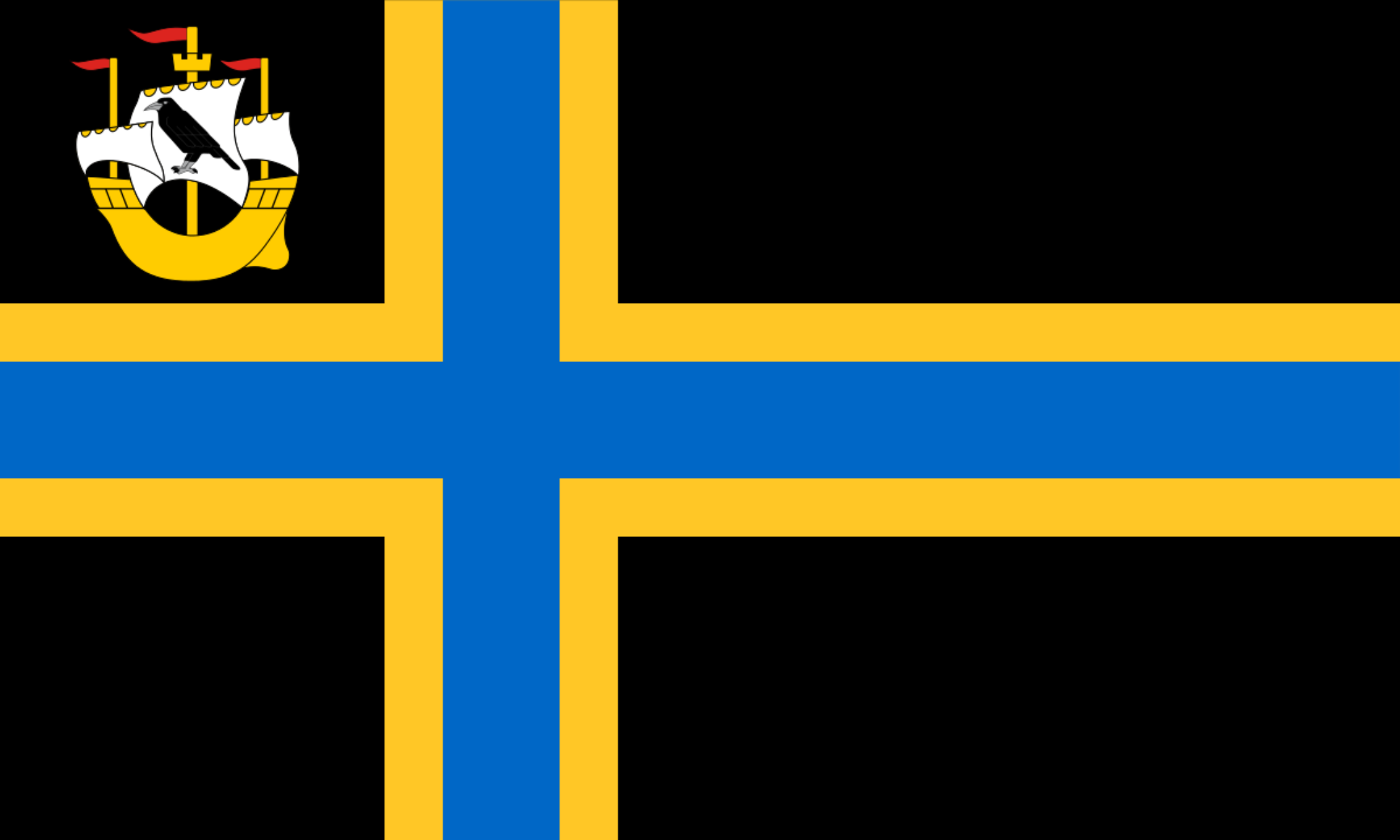
The flag of Caithness, featuring the raven (top right). The blue represents the sea, the black represents the dark nights, the yellow represents the pleasant uranium glow that most of us Caithnessians have, which is entirely natural, I assure you.
The boat in the top right is a galley, which actually used to be a Viking longship in the old county emblem. The cross also ties into Norse links, sharing similarities with the Scandinavian, Shetland and Orkney flags. Vikings unite!
It's the raven. Why is that?
Well, you see, Caithness has a close connection to Vikings and the Norse. The raiders/ invaders/ settlers - however you want to portray them - were prevalent across the north and western coasts of Scotland, and their presence was keenly felt in Caithness. This is clearly evident through historical, archaeological and place-name evidence:
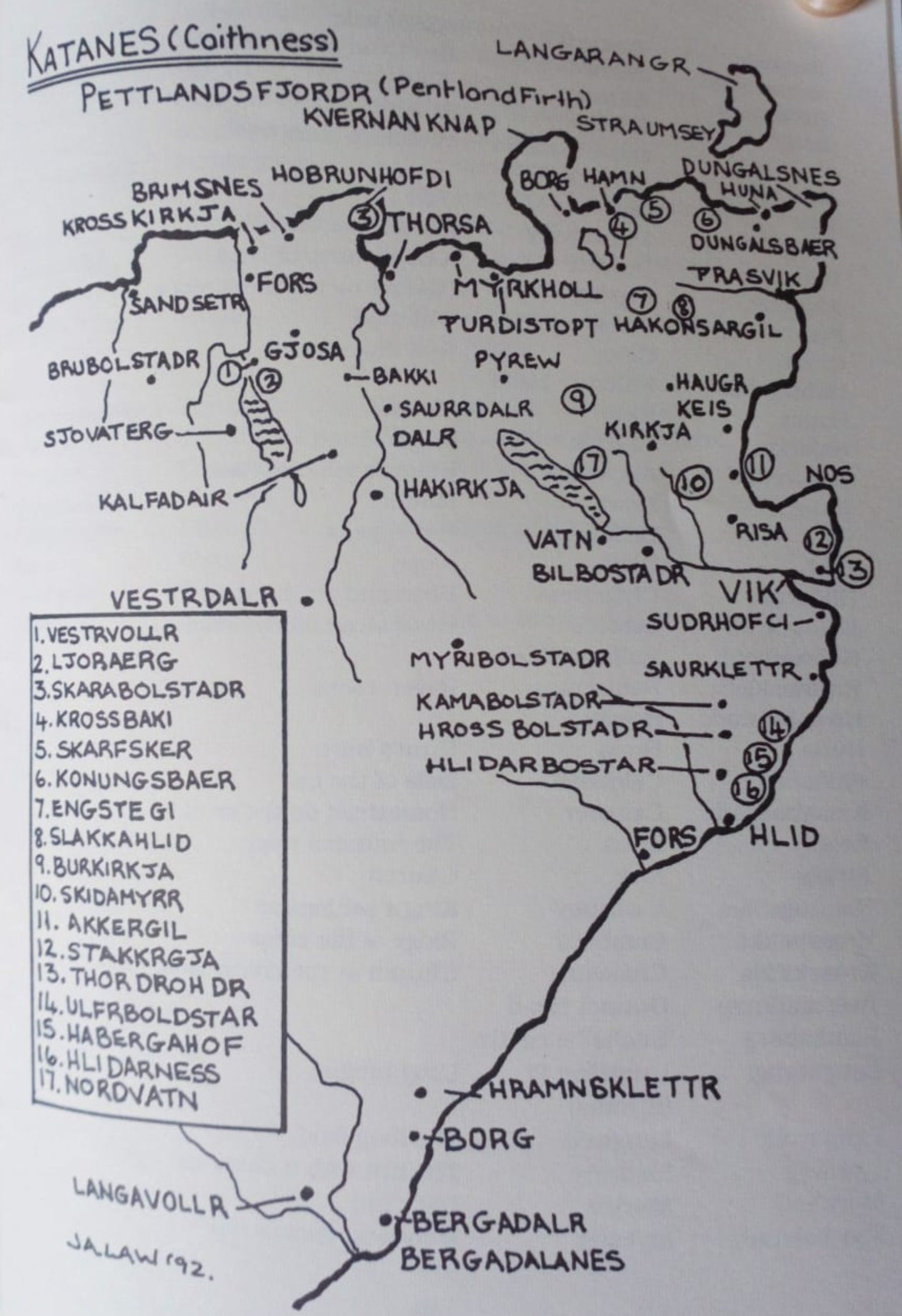
The map of Caithness, from 'The Raven Banner: A Guide to Viking Caithness' by Ian Cassells. Map by Jennifer Law (1992)
And of course plenty of broch-related archaeology, including the 'Viking' burial at Castletown Broch, found in 1786, which turned up a brilliant pair of a Scandinavian-style brooches:
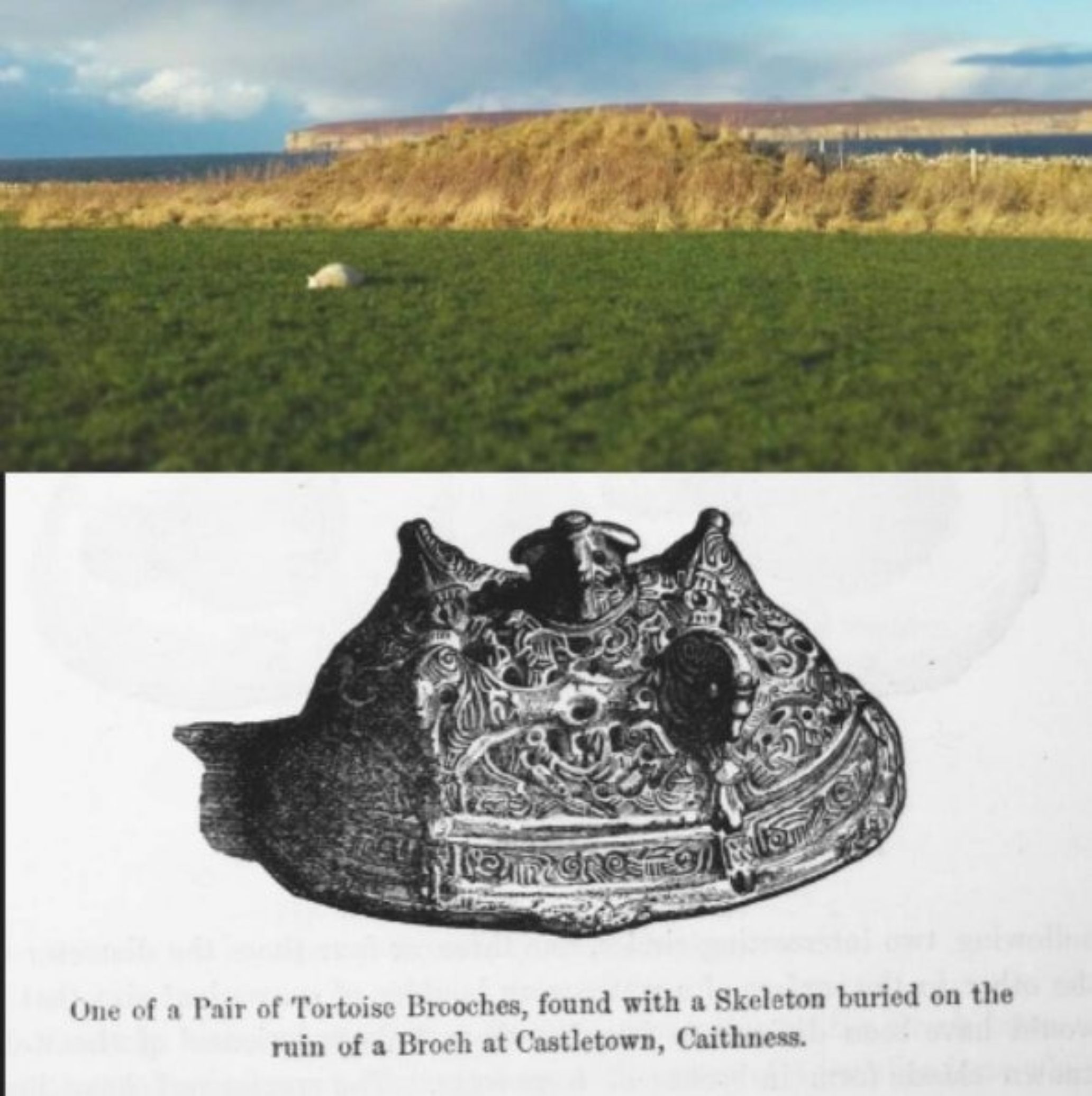
Castlehill Broch and one of the Scandinavian brooches
Or what about the fantastic Thing's Va Broch? You can read more about why this was Caithness' version of parliament on our blog post, or about our excavations nearby in 2017/18 here.
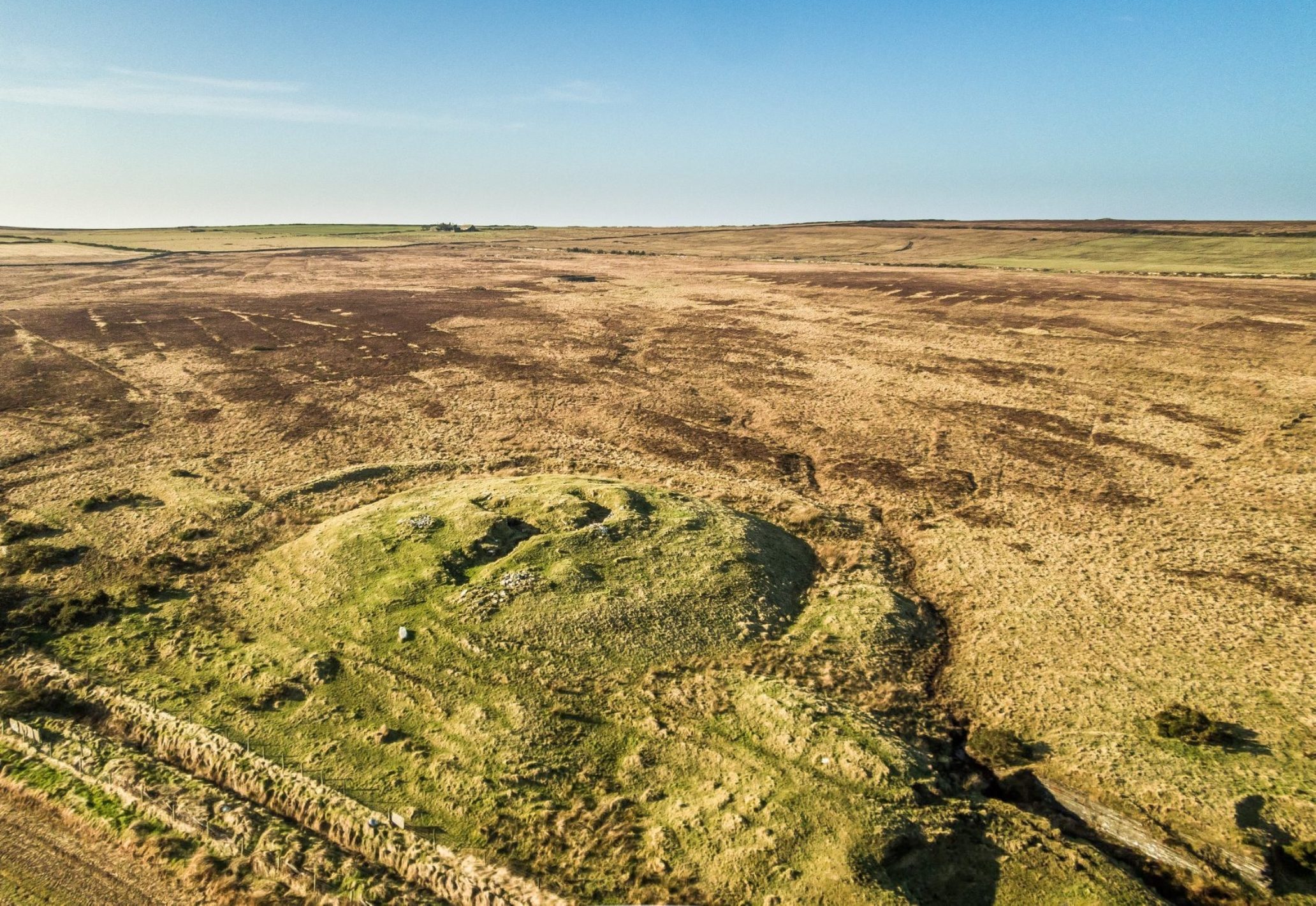
Thing's Va Broch by Highland Aerial Views
Now, the raven is an important part of Norse mythology.
One of the tales from Norse Mythology is that Huginn (from Old Norse "thought") and Muninn (Old Norse "memory" or "mind") are a pair of ravens that fly all over the world, Midgard, and bring information to the god Odin.
Archaeological Activity Interval #1: Make your own Huginn and Muninn!
Want to make your own version of #Odin's ravens? Simple! Use a paper plate black paint or black cardboard for the body, white cardboard and black paint or black cardboard for the wings, paper fasteners, googly stick on eyes or white paper and black paint for the eyes and white paper and yellow paint paper for the beak and legs. Et voila...or as the Norse might say, vær så god!
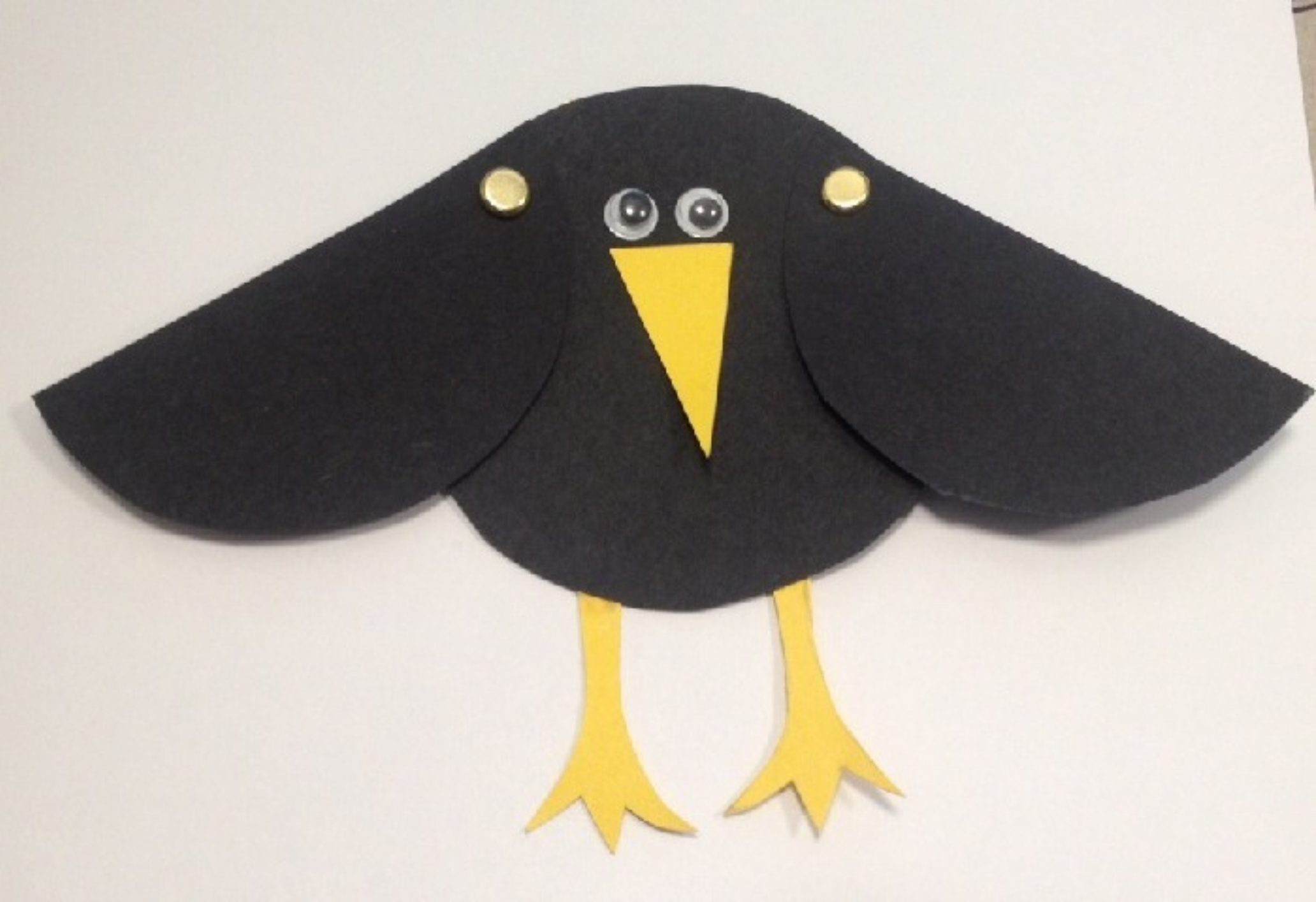
Muninn. Or Huginn. You decide.
Anyway...
The raven banner was a standard used by the Jarls (Earls) of Orkney and Caithness.
According to the Orkneyinga Saga, written in the 13th century, the Jarl Sigurd the Stout (Sigurðr) had a banner made for him by his mother...there was a bit of a caveat with the banner though. And when I say bit, I mean...I mean a fatal curse.
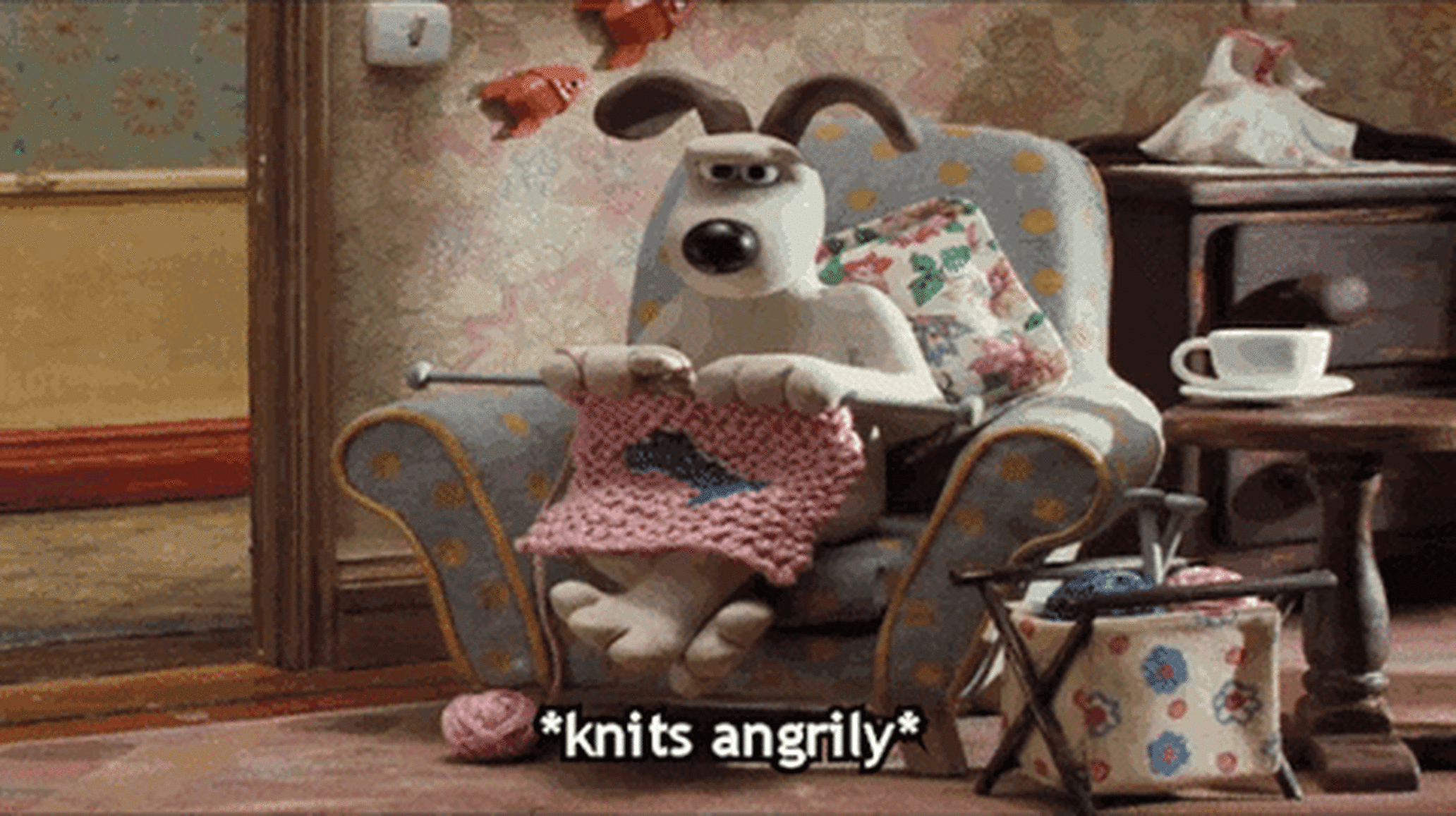
The banner would bring victory for anyone it stood for, but death to anyone who carried it. Y'all know where this is going, don't you?
Earl Sigurd acquired much power and land during his time in Scotland, controlling Orkney, Caithness and the Hebrides. So he was called upon to support Sigtrygg (also known as Sitric) 'Silkbeard' Olafsson, a Hiberno-Norse king in Ireland, against his wife's former lover Brian Boru.
According to Njál's Saga, Sitric recruited Sigurd for the Battle of Clontarf in 1014 (which celebrates its 1006th anniversary next Thursday!), by promising him great power in Ireland if they were to defeat Brian Boru.
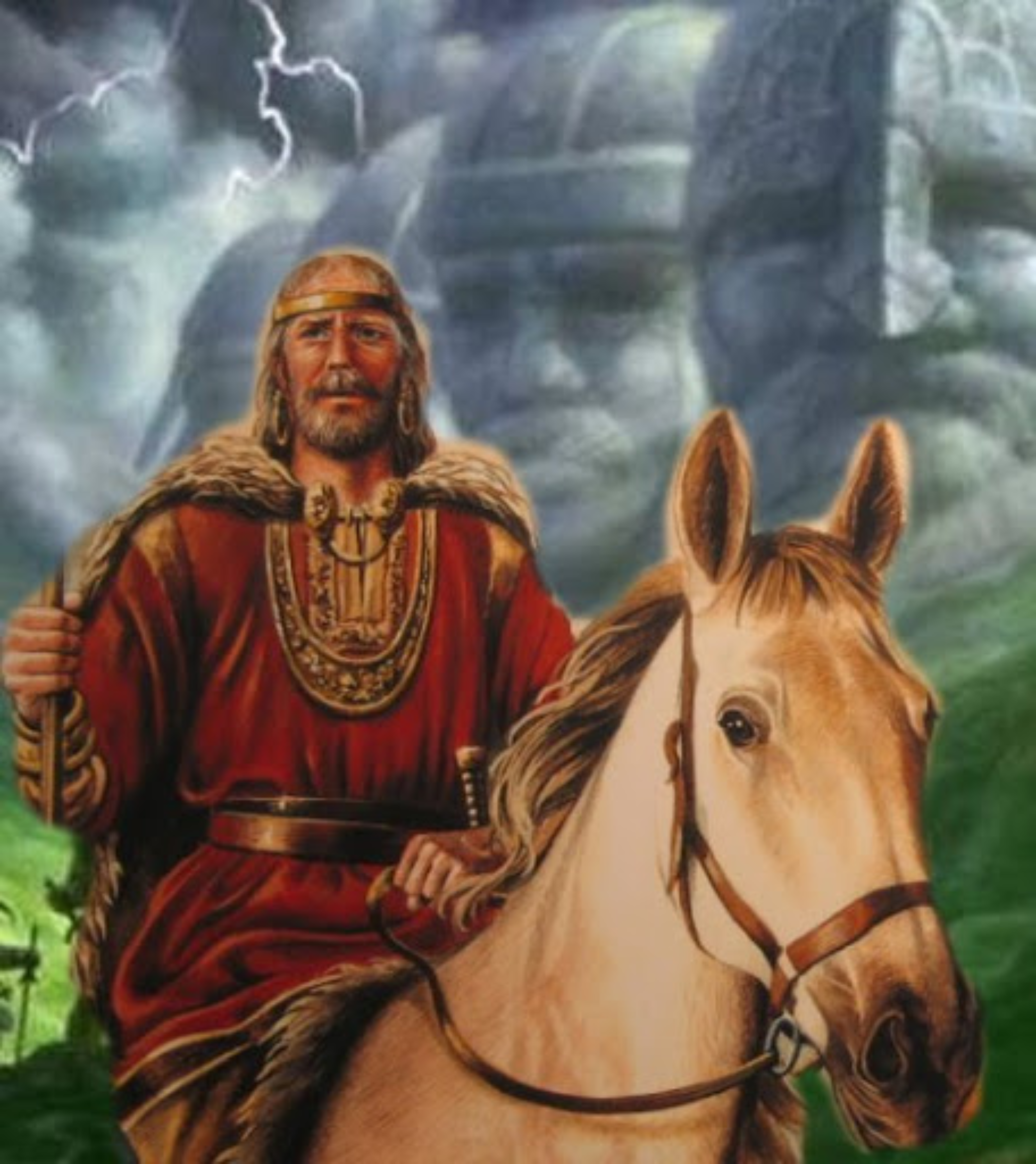
Brian Boru doing his best Simba Impression
In a 'colourful albeit partisan account', the 'Cogadh Gáedhel re Gallaibh', which was compiled by Brian Boru's twelfth-century descendants, describes Sigurd appearing for the Battle of Clontarf with an army of:
"...ignorant, barbarous, thoughtless, irreclaimable, unsociable foreigners of the Orc islands."
Of course, the Orc Islands = Orkney! And that other thing about the Orcadians is totally false. They're actually quite sociable.
Archaeological Activity Interval #2: Make your own Viking Ship
The Vikings would have used their longships to land on Ireland. Can you make your own Viking boat?
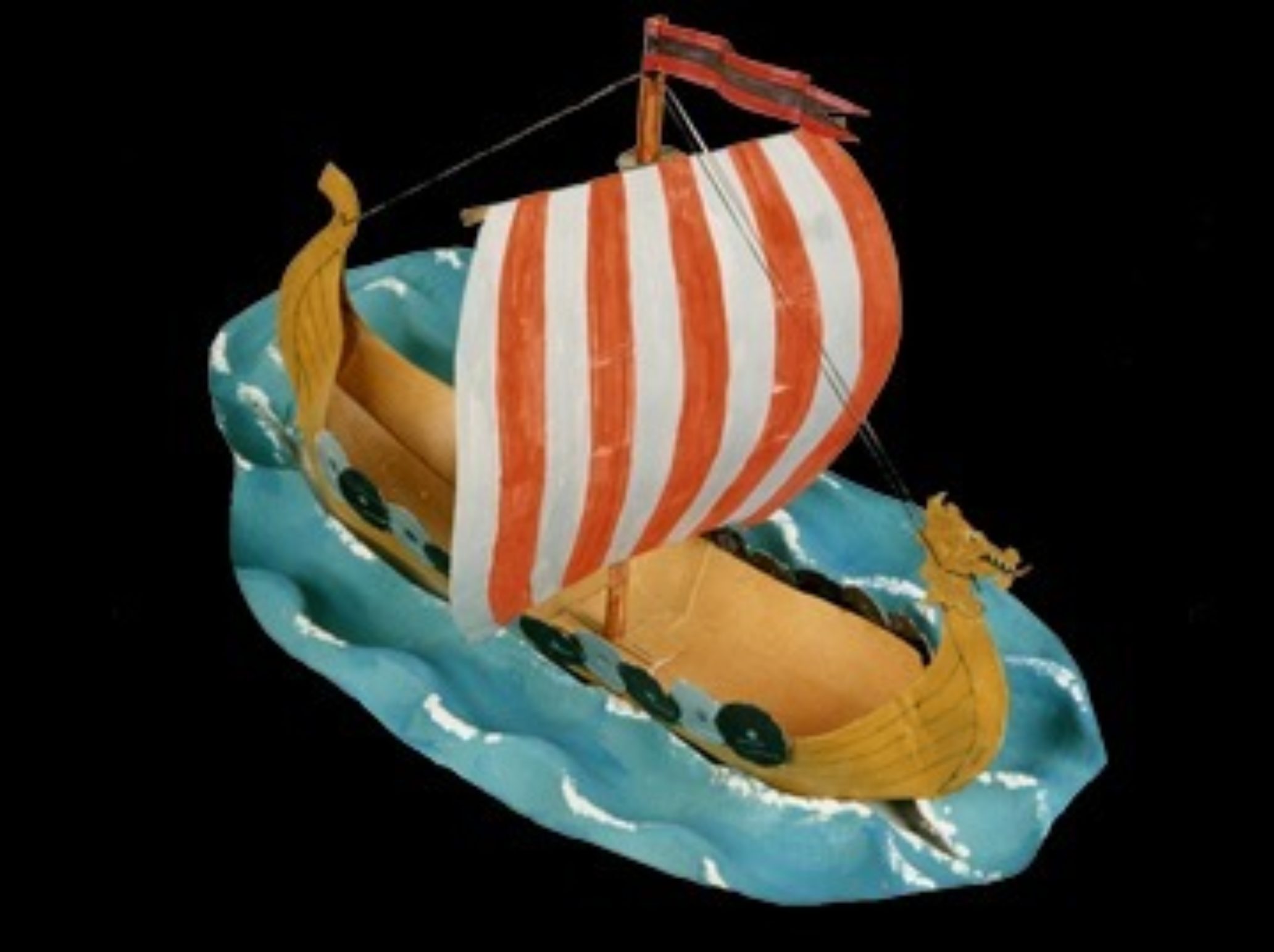
Just follow the link below to make your own version!
http://www.weandus.ie/how_to_make.html
So, the Vikings and the Irish faced off at Clontarf on the 23rd April, 1014 AD - so we're celebrating it's 1006th anniversary.
The Battle of Clontarf was a hard-fought tussle. Lots of #blood and gore...all the good stuff! (We highly recommend clicking on the previous link for an in-depth understanding of how the fight unfolded.)
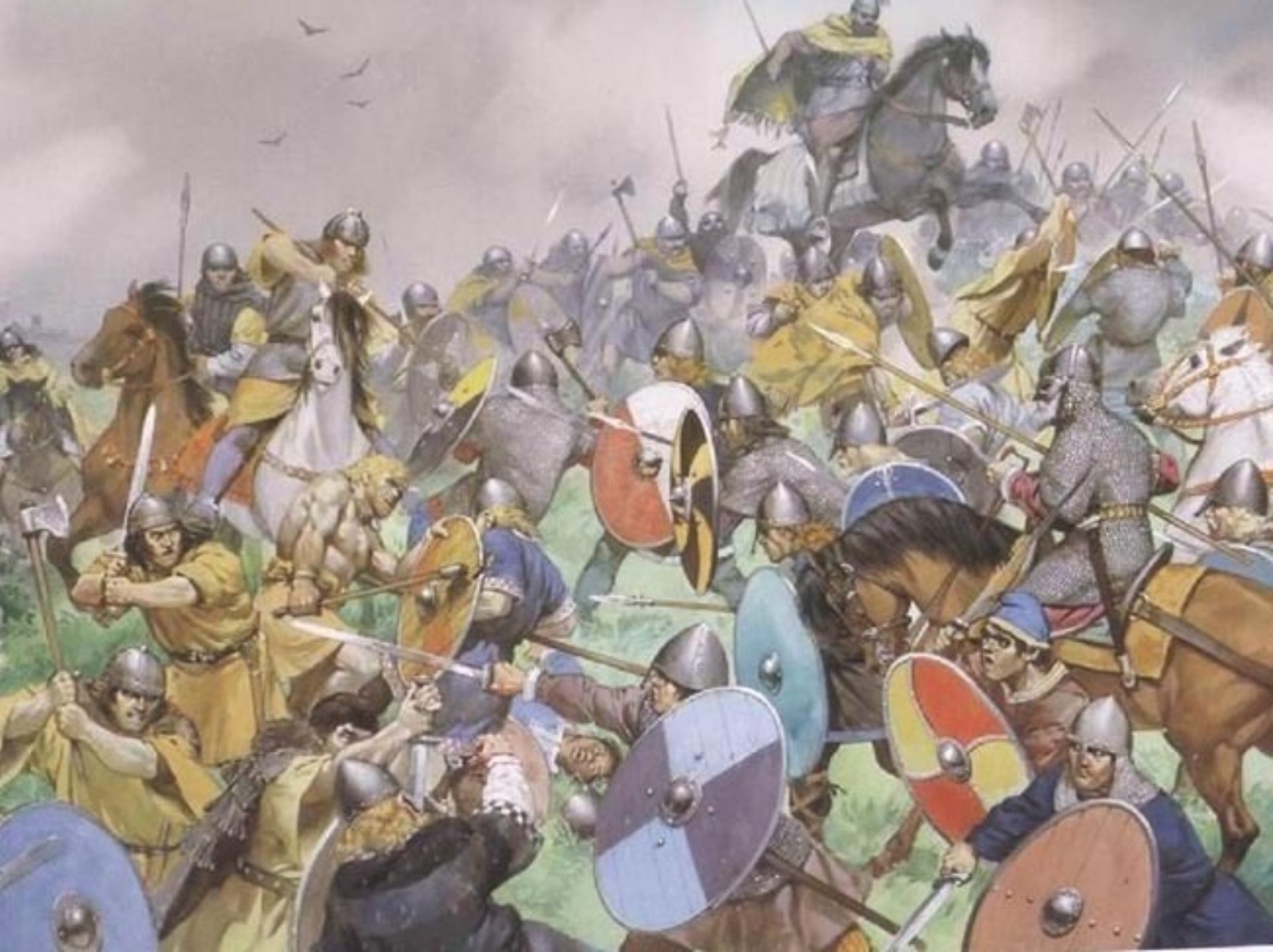
The Battle of Clonarf, taken from Irish Central. Like a disco at Skinandis!
But today we're more concerned with the mythological aspects.
In the battle, the Raven Banner was passed from person to person, with each who held it. It came to Thorstein, son of Hida, to hold it, but Asmund the White told him not to bear it, for it would end his life, so he did not pick it up.
Furious, Sigurd called on Hrafn the Red to seize itand, Sigurd came to carry it himself. Hrafn called back and told him to pick it up himself - I mean, given the circumstances, wouldn't you have done the same?
Double furious now, Sigurd tore the banner off and stuffed it in his shirt - he was wise enough not to carry it. But he had touched the pole, and that was enough. His mother's prophecy came true, and he was run through with a spear. The battle was lost, and the Irish celebrated a famous victory.
Archaeological Activity Interval #3 Make your own Viking shield!
Want to re-enact Clontarf? Well, here's how to make a Viking shield...
https://www.instructables.com/id/Dragon-Viking-Shield/
'Course you'll need a sword and helmet too!
There is a rather ending to this tale, though. According to Njal's saga...
Back in Orkney, Sigurd had ordered a man called Hareck to stay behind. Hareck reluctantly obeyed - but demanded that he be the first to hear of Sigurd's condition after the battle.
On the evening of the Battle, Hareck saw Sigurd riding home with his warriors, and was overjoyed to see him - knowing not what had unfolded on that fateful day.
He rode out to meet him...
His horse galloped ever closer towards his Norse friends...
As Hareck neared to his destination he did headed towards them, the earth began to open up, and the spectral horde rode under the hill. The hillside swallowed them up and closed back in.
Hareck was never seen again...
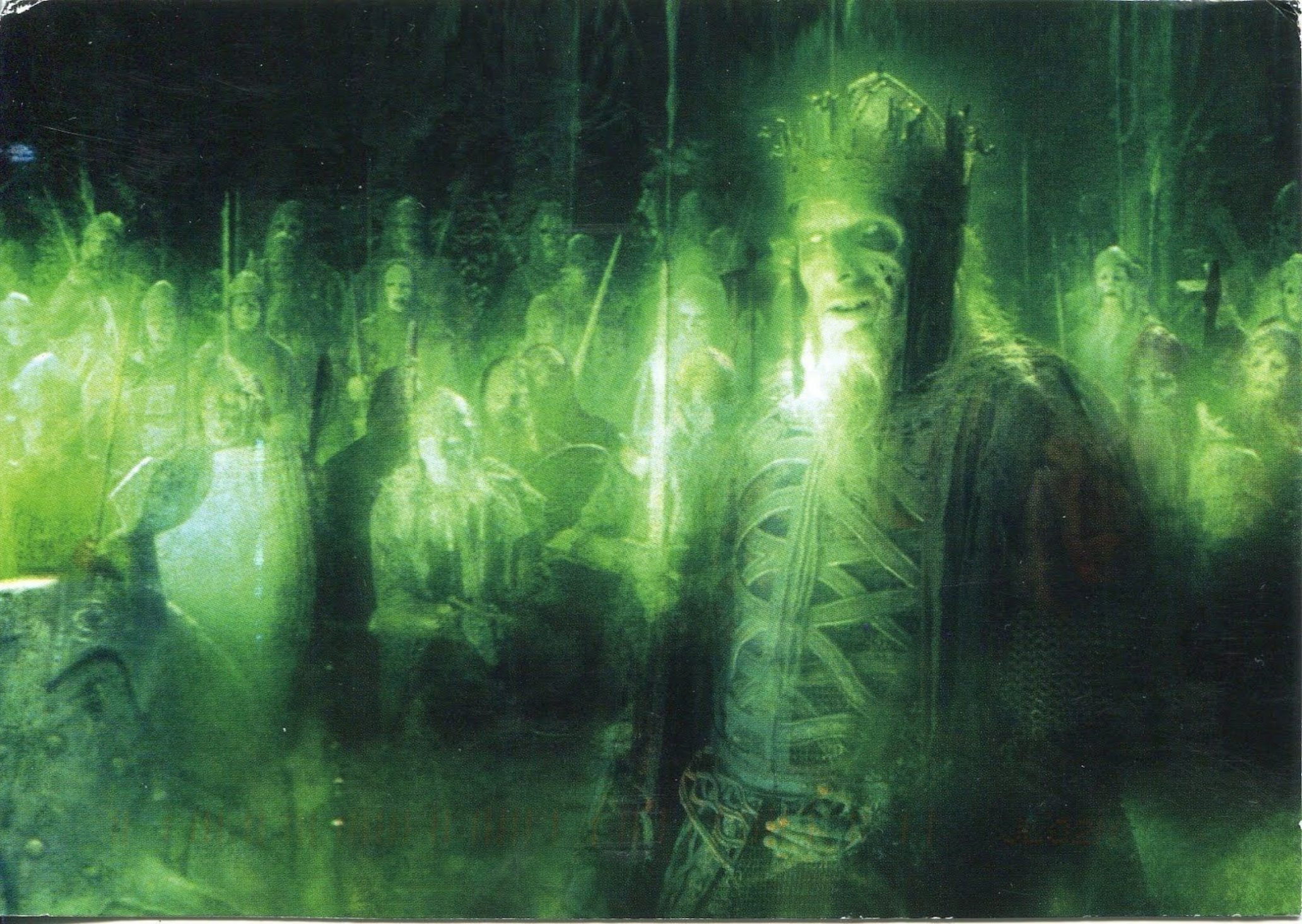
sPOooOOoopPPPpppyyy OR WHAT?
In fact, there is ANOTHER legend attached to Clontarf, this time based in Caithness. The story is found in Njall's Saga, another 13th century saga, which describes events between 960 and 1020 AD.
It describes how a man from Bower, Dörruðr (Darrud), witnessed twelve 'Valkyrie' riding into the hillside a Sysa - much in the same fashion as Hareck saw, above.
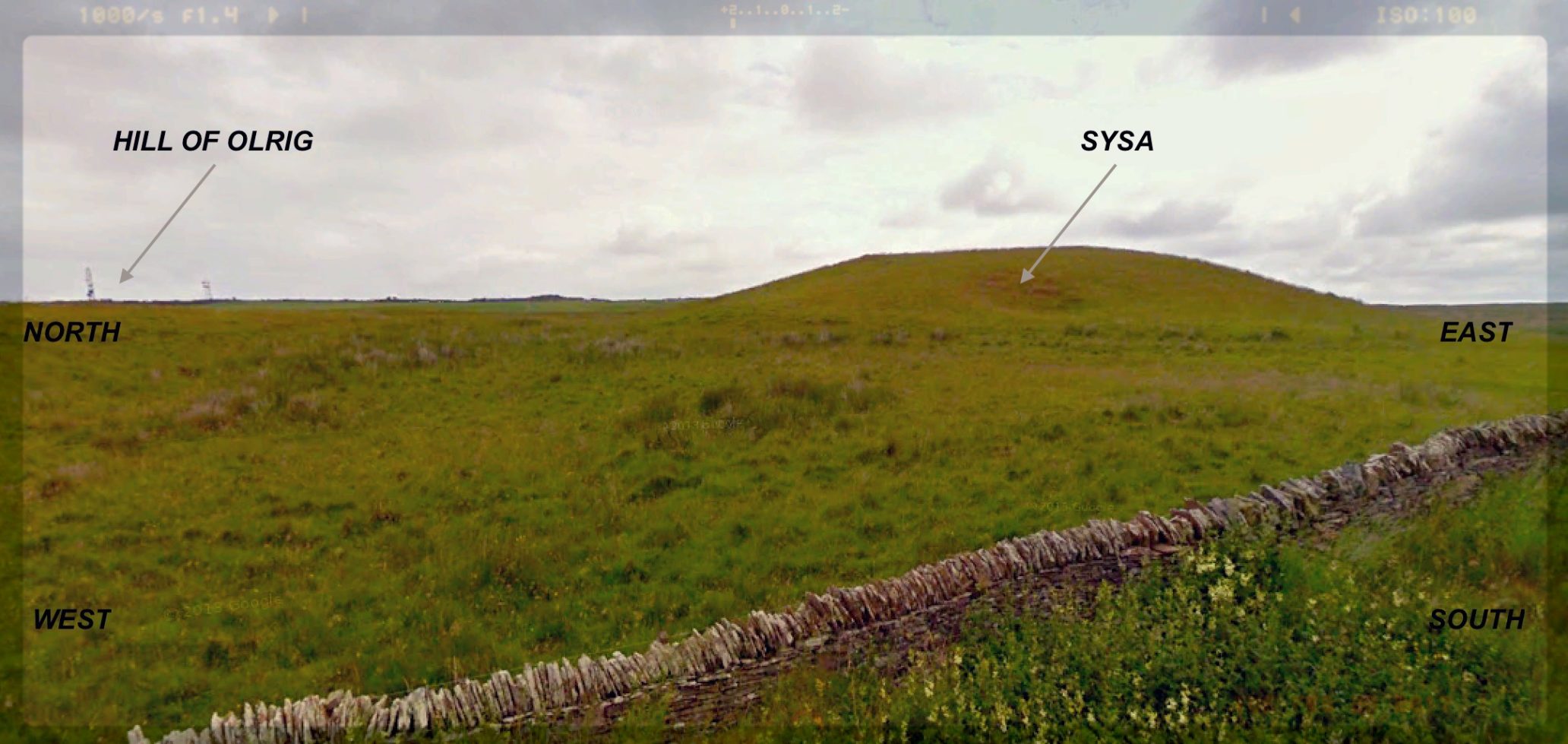
Sysa Mound, from Ashley Cowie
Darrud decided to peer into the mound to see what these supernatural beings were doing...and what he saw was truly horrifiying!
Darrud saw the Valkyries weaving on a loom - one which with strings made of human entrails, with human heads for weights, and other parts of the machinery made from Iron drenched in blood and gore. The entire scene was a grisly and visceral mess - much like the battle (for the full account please see http://www.orkneyjar.com/tradition/darra.htm)
"This woof is y-woven With entrails of men, This warp is hardweighted With heads of the slain, Spears blood-besprinkled For spindles we use, Our loom ironbound, And arrows our reels; With swords for our shuttles This war-woof we work; So weave we, weird sisters, Our warwinning woof."
*(Warp is the thread which runs down the cloth, the woof is the thread which runs across!)
Archaeological Activity Interval #4: Make your own Viking hat and beard!
(N.B. I suspect you have to be quite good at knitting to do this)
The Norns were laughing as they weaved - they were essentially weaving the battle, deciding the destiny of the fight with every wind and weave. The poem highlights the slaying of Sigurd:
"Now low before spearpoint That Earl bows his head."
Upon completing their battle scene, they tore it to shreds, and each took a piece of the finished cloth for themselves, with 6 riding south and 6 riding north...and Darrud managed to escape a supernatural fate, it would seem!
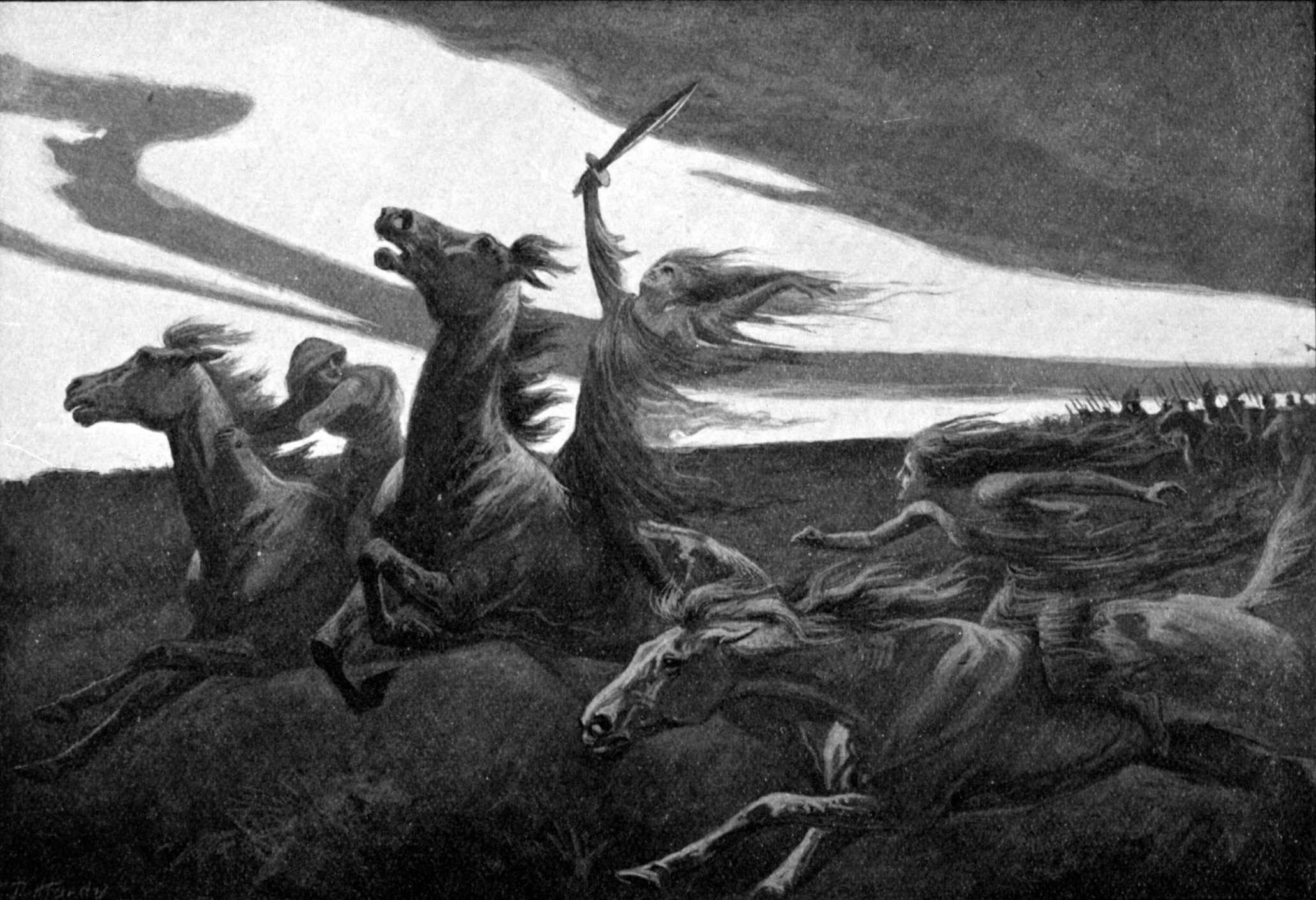
Valkyrie, from https://norse-mythology.org/go...
Anyway, there's a little about the importance of the Raven in Caithness - and a possible precautionary tale about running with the crows, and getting swallowed hole by a hill, with the crows.